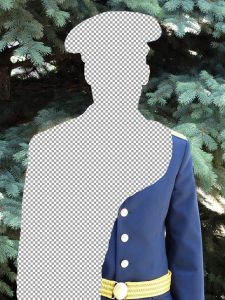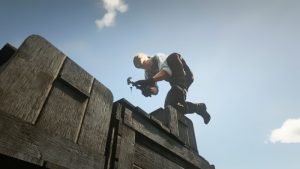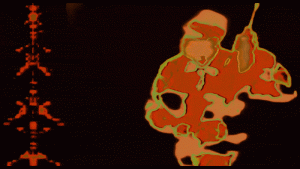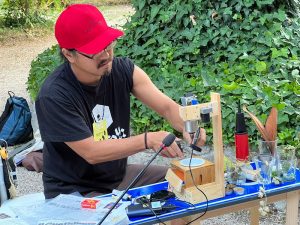Transmediale – Part 1, the Future Obscura exhibition
I’m not used to writing this about a media art festival but the best part of Transmediale for me this year was the performances and video programme. I missed about a half of the festival so i can only report on a few key moments:
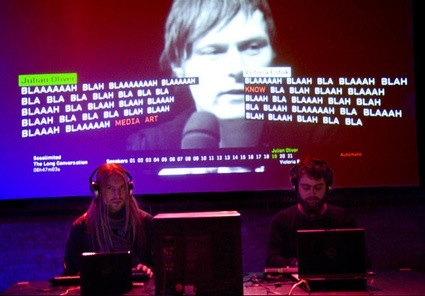
The most exhausting performance of the festival must be the 9 hour-long Long Conversion by Sosolimited. The art and design collective had been nominated for the TM award with their performance project ReConstitution, a new format of live remix of broadcast television, originally devised for the 2008 presidential elections in the US. They adapted the work to the experimental discussion Futurity Long Conversation that was taking place simultaneously in the big auditorium. During 9 hours 21 artists, designers, theorists, journalists and media interventionists relayed each other to discuss utopias, ideas and technologies crucial for the ways in which we conceive the future today. Well at least that’s what should have happened. Sometimes it worked admirably, sometimes, the discussions were a bit bumpy. Definitely a format worth exploring again, especially in a time when almost everyone around me seems to question the format of conferences.
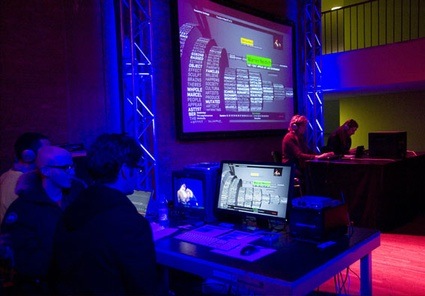
On a separate stage at the opposite end of the Haus der Kulturen der Welt, Sosolimited were busy turning the conversation into bits and pieces of data.
Typists were transcribing the words of the speakers and sending the text streams to an analysis software created by Sosolimited. The datavisualisation tool can extract video, audio, and closed captioned text from live broadcasts and transform this data into a whimsical narrative by cataloguing the utterings and movements of the people on screen. The words of the Long Conversation speakers were thus matched to lexical databases, and sorted by topic, tense, and certitude. Realtime statistics of all the speakers were passed through different filters and projected on a screen behind the typists.
As Sosolimited writes: The participants were supposed to be talking about the future, so we felt it would be nice to track their verb tense usage and see if they did. Hardly anyone actually talked in the future tense, preferring the present tense by a wide margin. 17 of the 21 speakers’ favorite word was ‘I’.
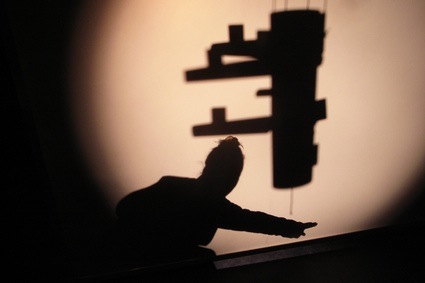
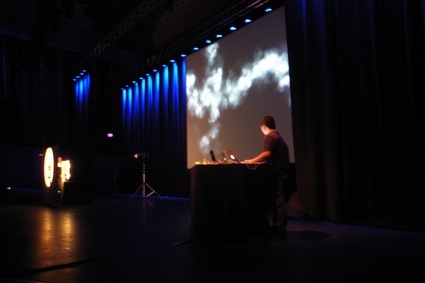 (images courtesy of the artists)
(images courtesy of the artists)
The closing evening borrowed its title, Myths Of The Near Future, from a short story by J. G. Ballard. The focus was media art from China.
Zhang Jian from FM3_Zhang and aaaijiao (Xu Wenkai) gave us a very meditative visual and audio performance. Zhang Jian is a pioneer of electronic music and also one of the creators of the Buddha Machine, the musical loop player that looks like a small radio transistor. aaajiao (Xu Wenkai) is a media artist and computer visuals programmer whose installations and performances have been touring the world over the past few years. He is also the power machine behind we-need-money-not-art.com, a blog that not only translates some of the posts of we-make-money-not-art into chinese but also covers media art events in the country. Through his work with and outside of the blog, aaajiao is acting as one of the main catalysts for the diffusion of media art and free culture practices in China.
The evening was curated by Li Zhenhua, the founder of Laboratory Art Beijing and one of the most talented and informed curators from China. Smart as he is, he knew that he also had to bring an established name on stage. Enters Feng Mengbo. He played live on stage with his customized game software Game Over: Long March which saw a Red Army soldier engage in various battles and challenges that speeds through China’s recent history, culture and the influences from abroad (think Great Wall of China meets Coca Cola!)
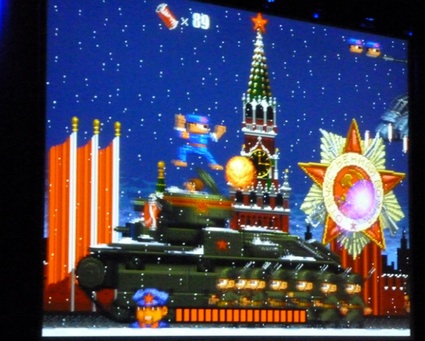
I’m taking the solemn oath that for the next edition of the Transmediale festival i will spend less time talking nonsense to everyone i meet at the bar and follow much more closely the video screenings. Because this year’s Fim & Video program was stunning.
Curated by Marcel Schwierin, the selection echoes the FUTURITY NOW! theme in terms of failed utopias. The 11 sections illuminate various sub-topics such as the role of the media, the future human body or the post-socialist era.
I didn’t see all the movies, alas! But here’s a quick pick of what was on offer:
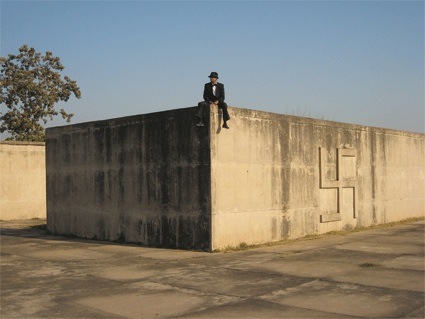 Dear Adviser by Vincent Meessen, 2009
Dear Adviser by Vincent Meessen, 2009
In Vincent Meessen‘s Dear Adviser is part of the Media Personification selection. The film wanders around Chandigarh, the city designed by Le Corbusier in the 1950s as a symbol of the new, progressive nation of India who had just emerged from its colonial past. Nowadays, Chandigarh stands as to the failure of modernist ideas. The Capitol, the inner city with government buildings and the focus of Meessen’s film, is eerily still and hardly accessible to the public for security concerns, because of the ethnic and religious tensions in the region.
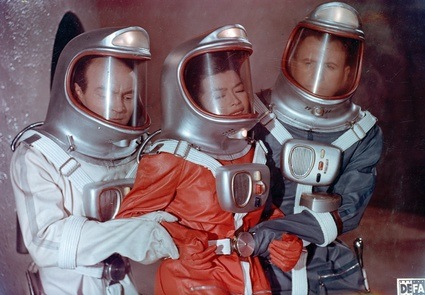 Kurt Maetzig, Der Schweigende Stern (First Spaceship on Venus), 1959
Kurt Maetzig, Der Schweigende Stern (First Spaceship on Venus), 1959
Fitting perfectly in the Futurity theme, the first science fiction film coming out of the GDR – Der Schweigende Stern (First Spaceship on Venus) – was screened in the big auditorium on Sunday.
The 1960 movie was based on the novel The Astronauts by Stanisław Lem, a Polish writer whose work put forward a vision of the future that incorporates technological, social as well as psychological criteria. Shot in Total Vision (the East German wide screen equivalent of the American Cinemascope), the movie was dealing with dystopia, presenting thus a negative warning of the future
 Reynold Reynolds, Secret Machine 2009
Reynold Reynolds, Secret Machine 2009
Secret Machine, by Reynold Reynolds, participated to the Future Bodies selection which confronts unstoppable technological progress with a fairly immutable human body. The protagonist of the film encounters an antagonist that is studying her, measuring her body reactions and resistance before comparing her to units of space and time. The scenes are inspired by Muybridge‘s motion studies of humans and animals.
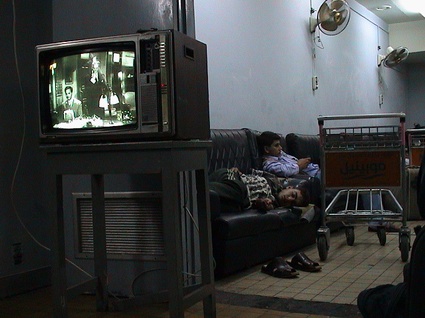 Taysir Batnji, Transit, 2004
Taysir Batnji, Transit, 2004
Guest curated by Rasha Salti, Agit-Prop, Punks and Poets: Digital Media between Film, Video and Activism in the Arab World exposed the ways digital media are used to challenge dominant media emissions in situations of political crises or violence. The programme was accompanied by a presentation of Arabshorts.net, an online platform showcasing film programmes curated by nine curators from 9 different countries of the Middle East and North Africa.
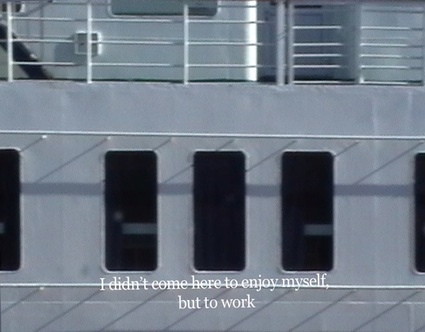 Bouchra Khalili, Straight Stories, Part 1, 2006
Bouchra Khalili, Straight Stories, Part 1, 2006
Straight Stories, by Bouchra Khalil, is an ongoing work about wanderings in ambiguous frontier zones where physical geography and the geography of the imagination become indistinguishable. In Straight Stories – Part 1, youngsters on both sides of the border between Spain and Morocco dream about life on the other side. Landscapes look similar, but migration between the first and third worlds is hampered by legal, social, cultural and political complications.
Palestine Note has a report of the presentation given by Rasha Salti at Transmediale.


